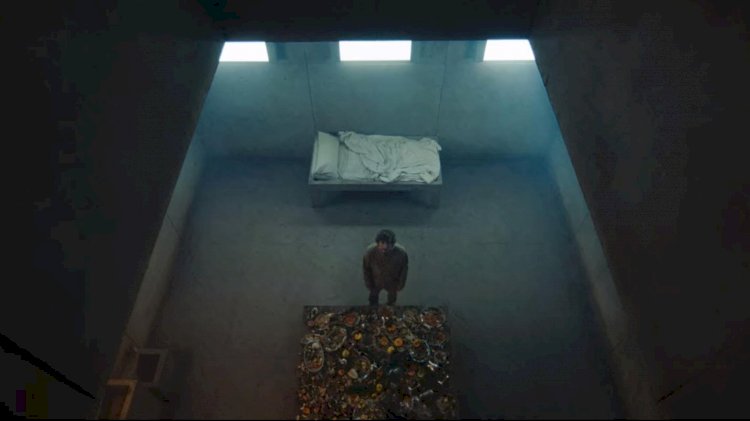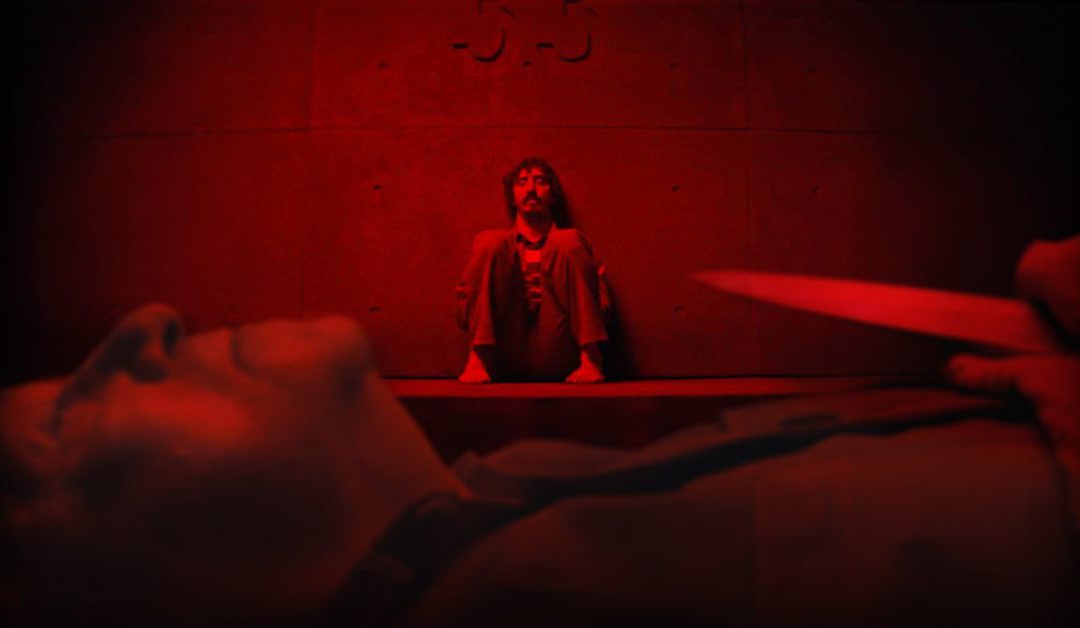Throwback Thursday
By Valkyrie Kerry and Brett Dyer
A sumptuous banquet is prepared under the strict instructions of an executive chef, every dish examined for its perfection. Each plate perfectly crafted and carefully placed.
There are three kinds of people; the ones above, the ones below, and the ones who fall.
Goreng awakens to find himself trapped in a surreal, vertical prison on Level 48. Concrete square rooms overlaying concrete square rooms in a structure akin to an elevator shaft. Each layer houses two inmates, Goreng’s cellmate Trimagasi explains that they are in the ‘pit’ and wonders aloud what their food will be. Goreng asks what it shall be and Trimagasi replies that it will be whatever the ones above leave them.
Goreng calls to the inmates below but is swiftly informed that they will not answer as they are below. Obviously. Equally, the ones above will not answer as they are above, obviously. As Goreng tries to extract information about their predicament the red light turns off and the green light turns on. A table drops, the feast comes, only the banquet has already been largely devoured and the duo are left with the remnants. Food can only be consumed whilst the table remains on that level, otherwise the temperature is increased to the point of death.

This premise sets the scene for one of the greatest satirical horrors of this age. Some prisoners are serving time for a crime, others are admitted out of choice, in Goreng’s case to overcome a smoking addiction and gain an accredited degree. Each prisoner is entitled to bring one object, Goreng opts for Don Quixote. Trimagasi seems shocked at both his choice and that Goreng will receive a degree but is tight-lipped regarding his observations including why the above population diminishes over the month.
At the end of each month the inmates are moved to a different level, Goreng soon learns that the other inmates opted to bring weapons in, as his time progresses, he realises why. Goreng’s descent into hell begins and what started as a simple premise equally descends into a gruesome reflection of reality, ‘every society is three meals away from chaos,’ (Lenin) and no food reaches the lower levels.
The Platform is without a doubt one of the greatest pieces of satire ever devised. It is an extremely heavily layered movie in which the narrative moves rapidly and presents a grim Orwellian dystopia. In this bleak microcosm of modern society any suggestion of sharing is deemed subversive and consequently it is violently resisted at every level.
The simplistic premise is immediately undermined within the narrative, primarily through Trimagasi’s haunting rhetoric. His explanations seem simple but mask the underlying truths of life within the pit. It is further complicated by the possible suicide or murder of one above, and the movement of a strange woman shifting between levels via the platform. Her purpose may or may not be to seek a lost child, trapped in a world that excludes children. The presence of a child would undermine the infrastructure of this deep social construct, but the motives and perceptions of all inmates are questionable.

As the end of the month arises the notion of God comes into question as a belief based solely on environmental factors. The depth of the satire and social commentary is beyond profound. These factors are cleverly reflected through the relationship between Goreng and Trimagasi, which initially appears equally baffling, but as they are moved to a lower level it develops into a wholly perplex conundrum. This mirror image of equitable human rapports and complex emotional ties holds true until the morbid, evocative climax.
The mise-en-scene utilises a contrast to add bleakness to the abyss. The kitchen in which the daily feast is prepared uses light combined with reds, greens, delicate culinary beauty, and bustling movement. It has an air of the creations of Peter Greenaway, particularly within The Cook, The Thief, His Wife and Her Lover. The pit, however, is entrenched in greys, browns and the deep blue light effects used in 80s horror. Clothing and bedding are equally bland and furnishing scarce. It is an effective geometric representation of the unpredictable fight for survival. As the narrative progresses these colours are purged with the crimson hue of blood. This hue grows brighter the deeper Goreng descends.
The Platform has some similarities to The Lord of the Flies, Animal Farm and Cube, but these similarities are sparing and lay primarily within the satirical nature of the film. It is an elegant representation of the horrors of cannibalism and the notion that human beings will eat each other, both metaphorically and physically, if that is what is required to survive. One extremely interesting notion presented is that as one human consumes another their psyches coalesce, and the hive mind infringes on individual thought.
Ultimately Goreng must make the choice; change things from above by descending to the ones below and send a message or remain within the hive. To descend is to face the most terrifying basic instincts of man and the lies of those in charge, whilst attempting to impose a solidarity and sharing ideology, an ideology that he knows all levels will aggressively resist. This movie is a must, an absolute must, and will leave the viewer wondering at its thought-provoking message for days.

